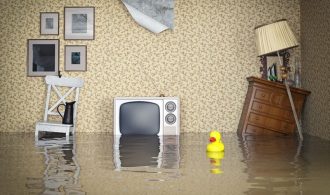It’s that time of the year again: flood season. As the rainy season picks up, many people will be experiencing floods and other disasters. Floods can not only wreak havoc on your home, they can also cause mold and mildew to proliferate. When it comes to water damage, it is both the water and the following mold that can do most of the damage. So, it is important to know exactly what to do to prevent the mold from spreading and causing additional damage. Some mold can be toxic, which makes removing it even more important. Here are five tips for preventing mold after a flood.
- Act fast. Mold moves at lightning speed, so it is important to clean up the water damage as fast as possible. Removing the water damaged items and cleaning up will prevent mold from spreading. However, you need to start right away – you can’t take a rest and start again the next day. If you don’t want to lose everything because of the mold, it is important to start cleaning up as soon as the water recedes.
- Provide plenty of fresh air in the area where there is the most water damage. Mold usually occurs when it is dark, damp and stuffy. So, not only do you want to make sure everything is exposed, but you also want to make sure that windows are open. Mold can’t stand fresh air – a little sunshine can also help. When it comes down to it, the more air circulation you have flowing through your home, the more mold will recede. You may also want to keep your air vents open to allow for the maximum amount of circulation.
- Use an air purifier. Having an air purifier on full blast will circulate the air and it will filter the air – and it will suck up any mold spores that may be floating in the air. So, immediately after a flood, be sure to blast the air purifiers. There are many air purifiers on the market that are built solely for the purpose of filtering moisture in the air. If you have just experienced a flood, it is better to utilize the purifiers sooner rather than later.
- Make sure to separate water damaged items. Mold and mildew grows on items that are crowded or grouped together. So, it is important to take items, like books, photographs and family photo albums and separate them in a dry place. Allowing these items to dry on their own can prevent mold and mildew from growing on them. Mold can cause significant damage to photographs, so it is important to separate photos sooner rather than later.
- Throw anything out that may already have mold and mildew on it. Mold and mildew damaged items should be thrown out right away. Keeping these items can spread mold to other items. If you don’t want to throw away photographs, you could place them in plastic bags – you can always have them professionally cleaned later. Taking this measure will hugely reduce the devastation caused by mold.

